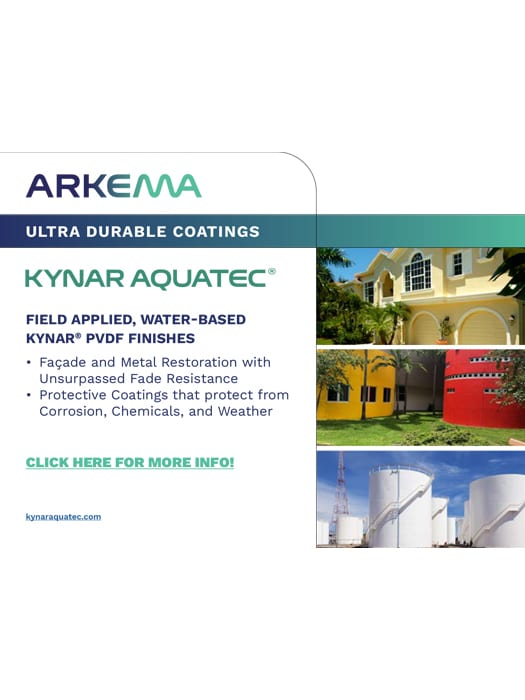Ready to proof -- Clare 2/8/23
CB proofed 2/9 - one comment for clare below. Also, Clare, is it possible to trim the video at the beginning so that it starts pouring the paint, sooner?
KJ proofed oon 2/9 - I have no changes. Courtney, I couldn't see your note to Clare in the body. I can see your note on the side of the page, but I can't tell where you are questioning the line breaks. Clare, can you see it? Also, yes, if we can start the video right before the paint starts pouring (or speed it up) that would help. Otherwise, people might miss the pour before they scroll down.
CB - Cj resloved the break issue!
CLJ revised on 2/10
CB - clean on my end
SoraPhotography, Creatas Video+ / Getty Images Plus, via Getty Images
A Universal Dispersing Agent for All Kinds of Pigment Preparations
By Dr. Simon Aben, Global Launch Manager Industrial Applications; Joerg Rueger, Head of Competence Center Paints & Coatings; and Matthias Häußler, Strategic Innovation Project Manager IBB, Clariant, Industriepark Hoechst, Frankfurt am Main, Germany
There are many different pigments available in the market and even more dispersing agents to disperse them. The general assumption is that dispersing agents containing affine groups, like styrenes, work well in the dispersion of organic pigments, while polyacrylates are good for dispersing inorganic pigments. However, the reality is much more complex due to wide varieties in pigment particle surfaces and pigment qualities. For the formulator, this can lead to large pre-testing phases in order to determine the right dispersing agent, leading to a flowable and low-viscous, storage-stable pigment preparation that can achieve the right tinting performance for water-based paint systems.
The introduction of dispersing agents that are suitable for all types of pigments creates opportunities to simplify the process of producing high-performance waterborne pigment preparations. To demonstrate the potential offered by a recently developed “universal dispersing agent,” Dispersogen® Flex 100, comparative tests have been conducted on organic and inorganic pigments in key areas including storage stability of the corresponding pigment preparations and their color strength development in water-based paint systems.
Considerations for High-Performance Pigment Preparations
Pigment preparations are manufactured by properly dispersing a pigment in a water phase containing biocides, humectants, anti-foaming agents, and a dispersing agent. The latter is an essential component of the pigment preparation, used to control particle size throughout the entire process.
First, the pigment must be wetted to break the agglomerates into small aggregates, and then, with the help of milling beads, the aggregates are disrupted into primary particles. During the process, dispersing agent molecules latch onto the surface of the particles to stabilize them and to avoid re-aggregation, leading to a homogeneous and fluidic pigment preparation. However, when aiming for a high-performance pigment preparation there will be various additional requirements, such as a high tinting strength in various paint systems and a good stability profile over time at different temperatures (most likely 25 °C and 50 °C, over 28 days). Notably among these, it is very important to ensure a low-viscous product without sedimentation or phase separation, and the absence of thixotropy.
To help to address this complexity, Clariant has developed a polymeric dispersing agent, Dispersogen Flex 100, with pigment-affine groups for dispersing organic and inorganic pigments, including carbon blacks and titanium dioxide. It has an active content of 100% and contains less than 0.5% VOCs and 0.1% SVOCs (ISO 11890-2). Moreover, it is free of APEOs, NPEOs and TSPEOs, and does not contain any solvents. Resulting pigment preparations made with this universal dispersing agent have shown to be highly compatible with all types of waterborne paint systems and to perform in tested solventborne alkyd systems from the DIY market, as demonstrated in the following tests.
Improving Storage Stability
Storage stability is a significant factor in high-performance pigment preparations. Poor storage stability will generate issues such as phase separation or sedimentation, which lead to incorrect handling and ultimately a loss of performance.
We compared the stability results upon storage of pigment preparations based on pigment inorganic PO 82, prepared with the new polymeric dispersing agent and two market alternatives also seen as universal dispersing agents – a block copolymer with affine pigment groups (Alternative 1) and a polymeric acid ammonium salt (Alternative 2).
After 28 days’ storage at 50 °C, simulating a shelf-life of two years at room temperature, we observed that the formulation containing Alternative 1 showed a phase separation. The one with the Alternative 2 had undergone a strong viscosity increase, so much so that the sample could not flow anymore, as can be seen in Figure 1. On the contrary, we noticed that these issues did not exist with the pigment preparation made with the new dispersing agent. We observed a fluidic and non-thixotropic, one phase formulation.
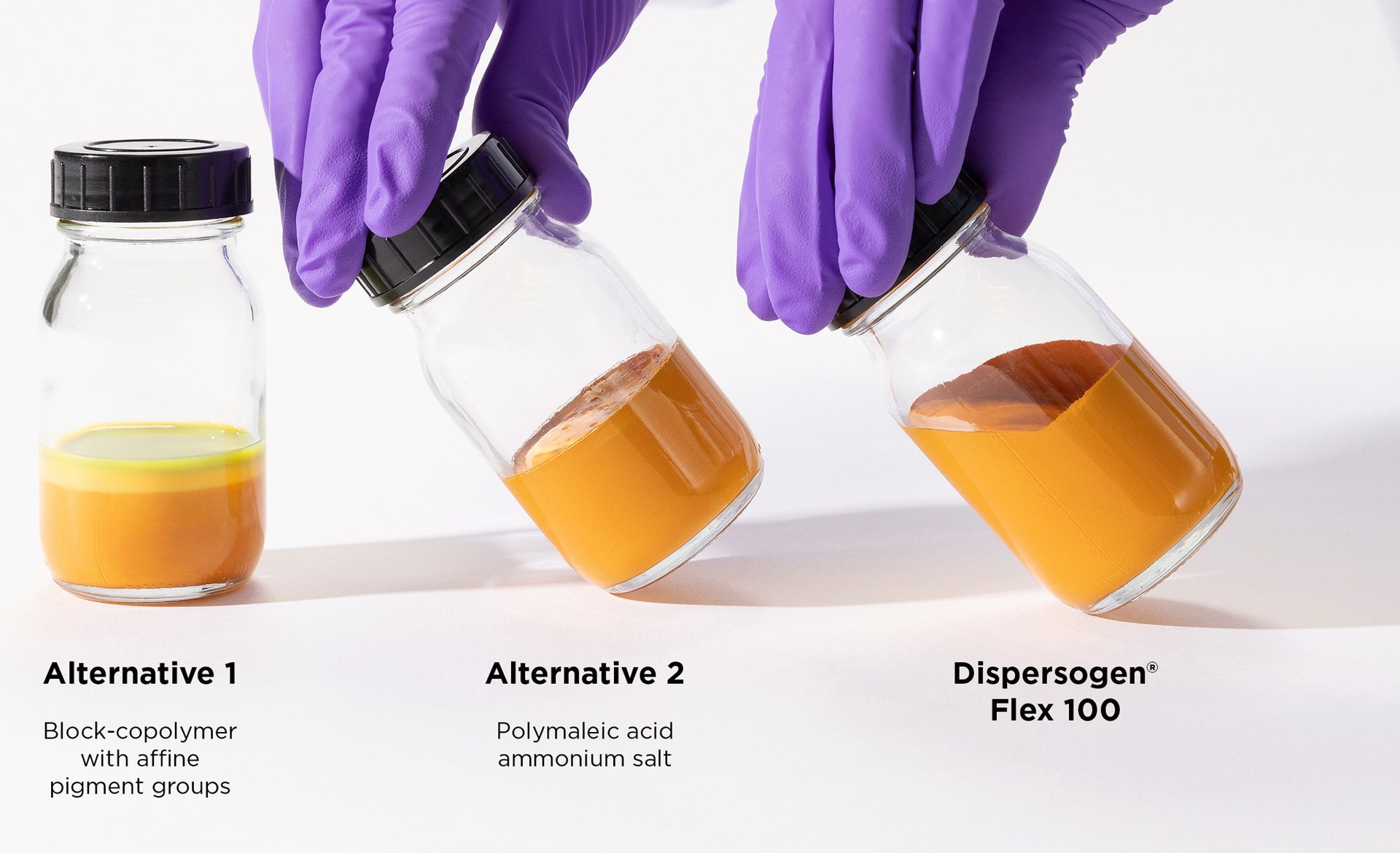
FIGURE 1 ǀ Stability test after 28 days at 50 °C of pigment preparations containing different dispersing agents.
In Figure 2, we show results for a broad selection of pigments, including inorganic, carbon black and titanium dioxide, and organic pigments. These demonstrate the ability of Clariant’s dispersing agent to ensure a high level of stability for a wide range of pigments. Low viscosity remains a feature, even after long storage times. Further, we see in Figure 3 that for the pigment preparations prepared with Alternative 2, the viscosity increases strongly upon storage, while with Dispersogen Flex 100 it remains low and constant.

FIGURE 2 ǀ Overview table on the stability of pigment preparations prepared with various dispersing agents.
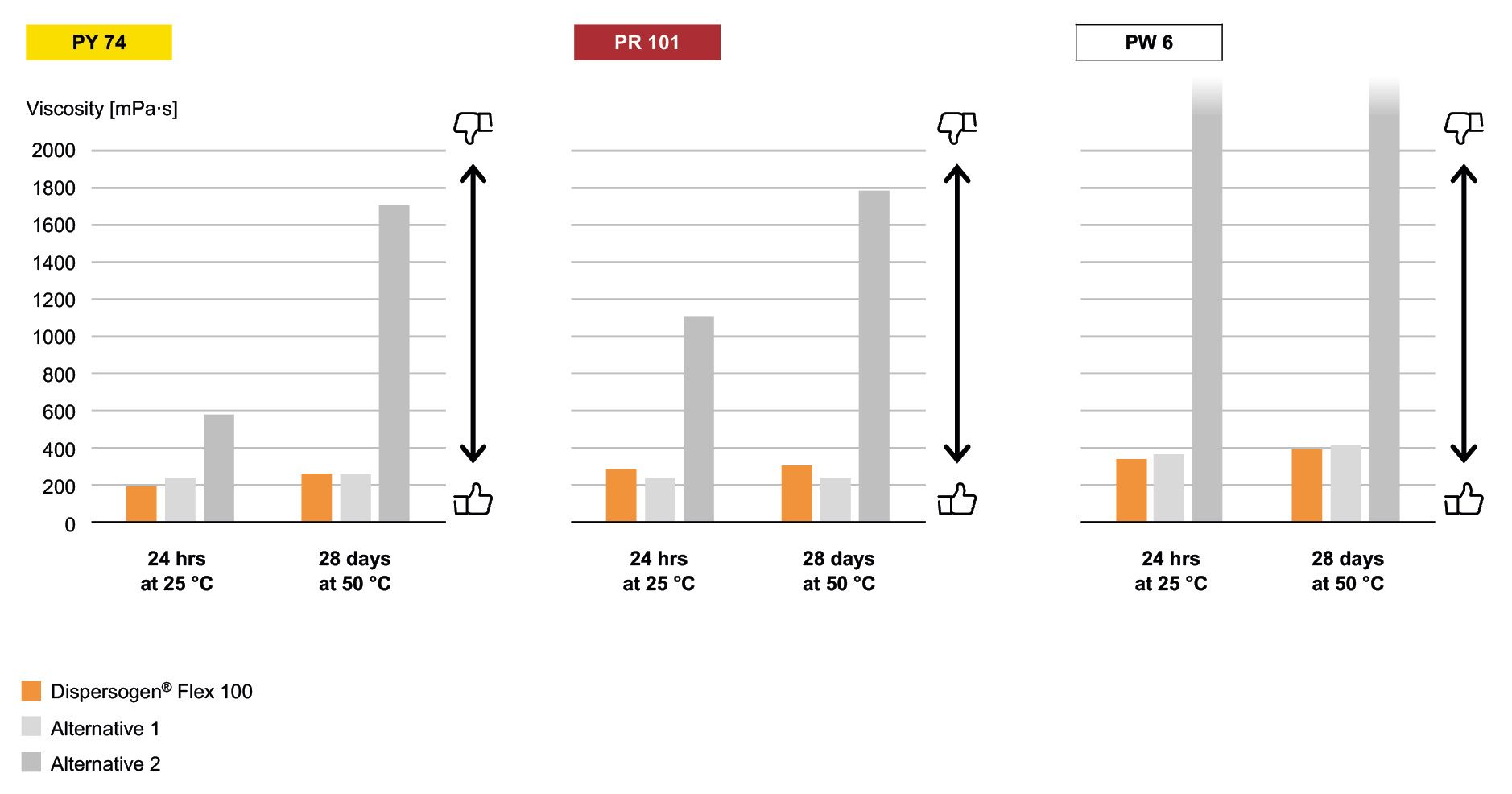
FIGURE 3 ǀ Viscosity monitoring of pigment preparations during warm storage tests. The viscosity is measured one day after preparation at 25 °C and then 28 days at 50 °C for pigment preparations with PY 74, PR 101 and PW6 containing the various dispersing agents.
Color Strength Development in a Water-Based Paint System
Pigment preparations are used to tint white-base paints, from low- to high-PVC (pigment volume concentration) and containing different binder systems. Due to the complexity of such formulations, incompatibilities between pigment preparations and base paints are often observed, which leads to a lower color strength with often a strong rub-out.
In Figure 4, the schematics show the performance of the three universal dispersing agents used in pigment preparations to tint a high-PVC dispersion paint containing a styrene-acrylic binder. We see from the overall picture that Dispersogen Flex 100 significantly outperforms Alternative 2 and offers improved performance over the Alternative 1. Similar results were also obtained using other paint systems such as acrylic- and vinyl-acetate low-PVC lacquer systems.
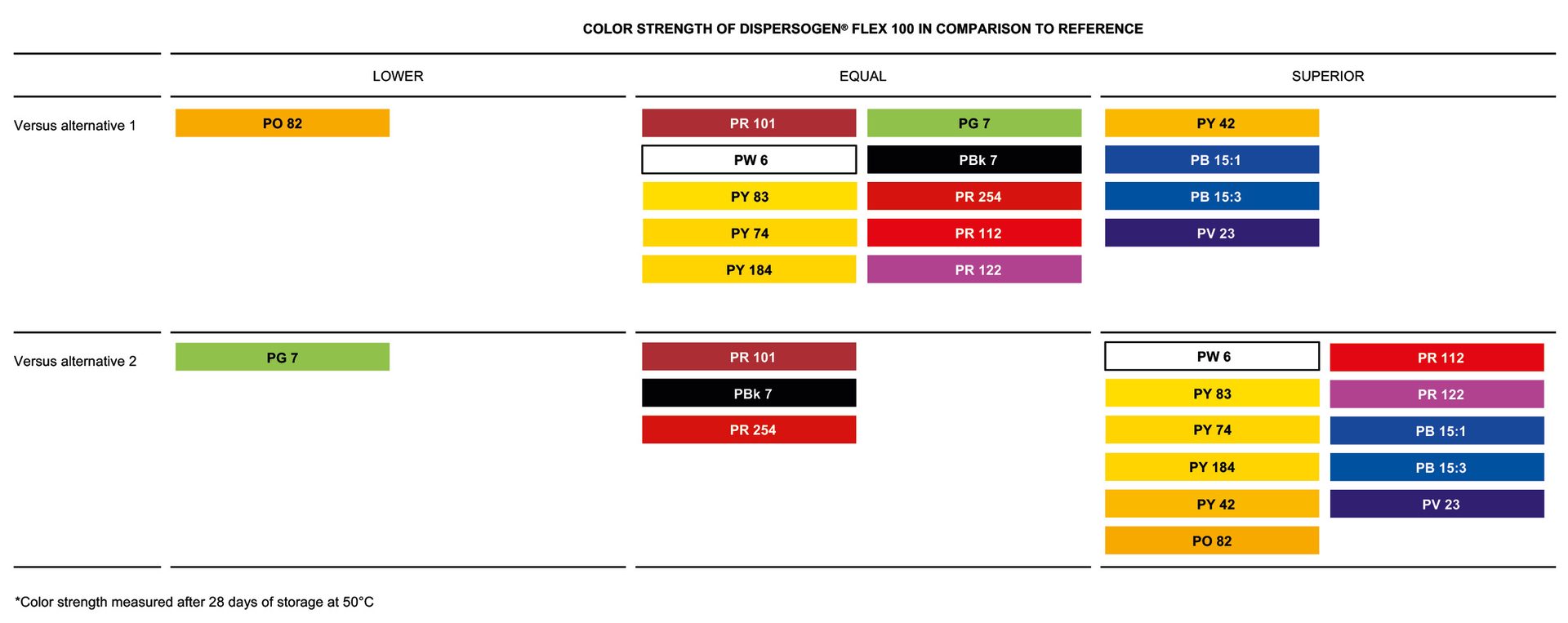
FIGURE 4 ǀ Overview of pigment preparation compatibility in a styrene-acrylic high-PVC dispersion paint using various dispersing agents.
Additional Benefits in Solvent-Based Systems
Tinting a solventborne system is known to be more difficult than tinting waterborne paint, since for the latter the base paint and the pigment preparation both contain water. As soon as the pigment of the waterborne pigment preparation gets mixed with a solvent-based paint, some instability mechanisms, such as the pigment choc effect, appear at the surface of the pigment particles. This leads to strong aggregation of the pigment particles in the bulk and hence a loss of color strength associated with a strong rub-out. This is mainly due to the presence of water in the pigment preparation that is incompatible with the solvent-based paint.
To overcome this, it is very important to have as little water as possible in the pigment preparation. In other words, to have high pigment loads enabled by the right dispersing agent. However, this is not everything. Achieving a good compatibility between the pigment preparation and paint system is also given by a good compatibility between dispersing agent and solvent-based paint.
This is demonstrated in Figure 5, whereby we simulate the addition of a pigment preparation onto a solventborne alkyd system, by adding a dispersing agent to a clear alkyd lacquer and checking the compatibility. It can clearly be seen that Dispersogen Flex 100 is highly compatible with the alkyd lacquer, while Alternative 1 is not when added to the alkyd lacquer under the same conditions. The incompatibility shown by the emulsion-like appearance is most likely because Alternative 1 brings water to the alkyd lacquer since it is only a 40% active product, while Dispersogen Flex 100 is a 100% active product.
This incompatibility can be seen in real conditions in Figure 6. Here, pigment preparations of PY 74 made of different dispersing agents are used to tint the same alkyd lacquer (from DIY Store). It can be seen that the solvent-based alkyd lacquer with Dispersogen Flex 100 ensures a much higher color strength and a lower rub-out compared to the two market alternatives.
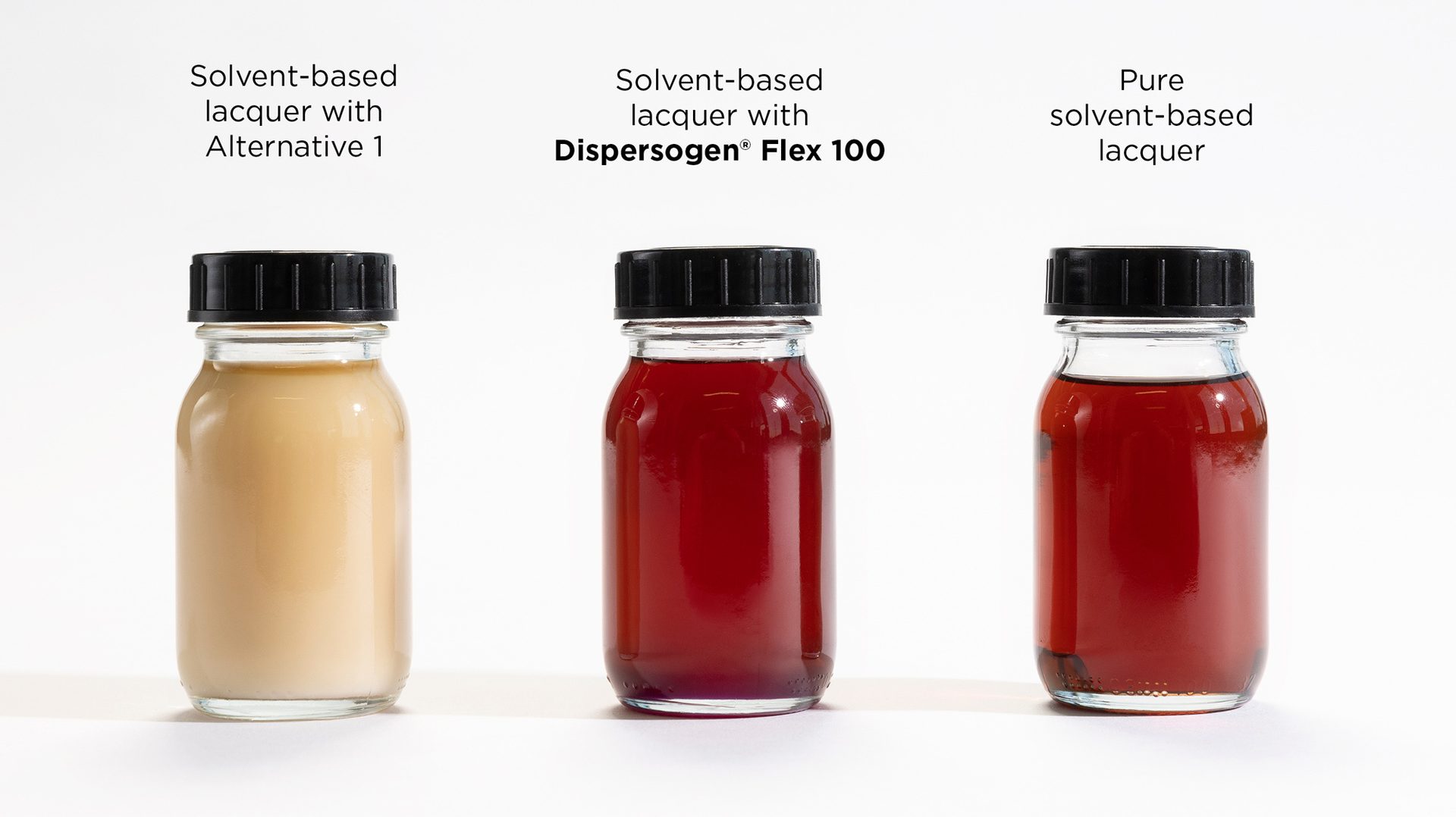
FIGURE 5 ǀ Compatibility test between dispersing agents and solvent-based systems.
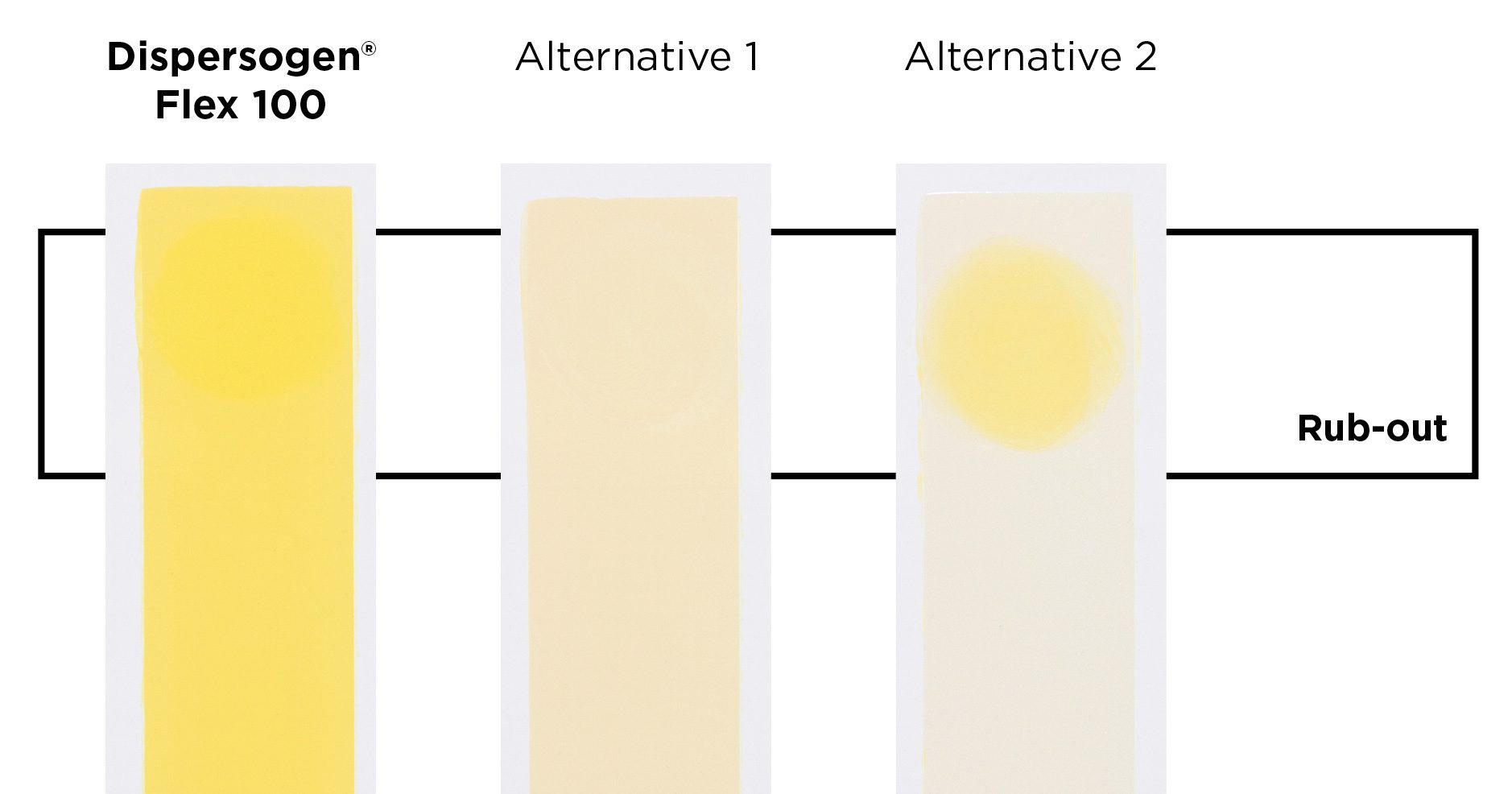
FIGURE 6 ǀ Alkyd-based lacquer tinted with pigment preparations of PY 74 prepared with various dispersing agents.
Sustainability Benefits
The new polymeric dispersing agent has an excellent sustainability profile, ensuring biocide-free and low VOC/SVOCs. It is APEO-, NPEO and TSPEO-free, and in general label-free.
Having 100% active content enables lower dosage in the pigment preparation compared to current market alternatives. This can be better seen in Figure 7 in which a pigment preparation formulation of PY 83 is given either with Dispersogen Flex 100 or with Alternative 1. As Alternative 1 has only a 40% active content, it needs 2.5 times the dosage, leading to higher costs. Therefore, with the same quantity of dispersing agent (e.g. 1,000 kg), it is possible to prepare 5 x 1,000 kg of pigment preparation PY 83 with the market alternative, and 12.5 x 1,000 kg with Dispersogen Flex 100, which contributes towards improving manufacturing efficiency (Figure 8).

FIGURE 7 ǀ Example of guide formulation of a PY 83 pigment preparation.
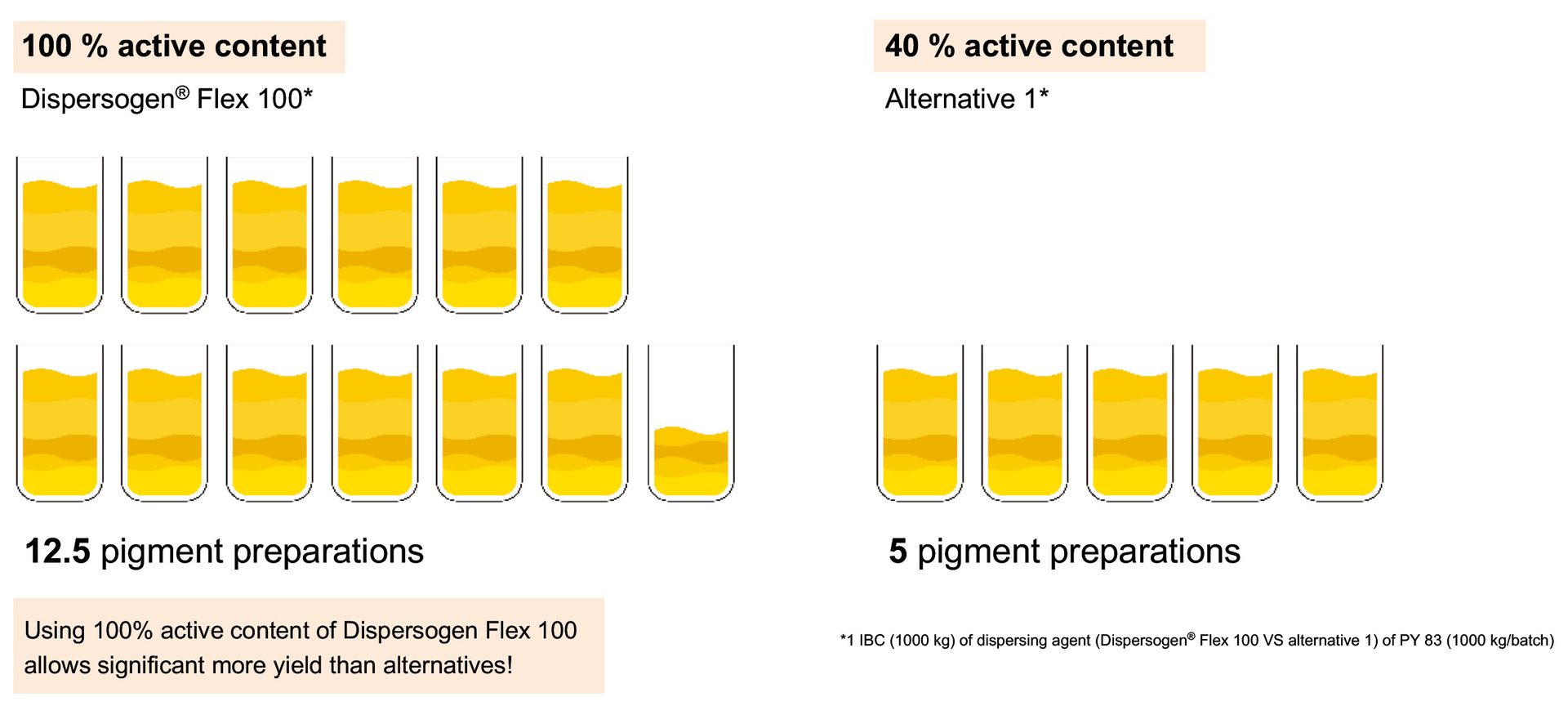
FIGURE 8 ǀ Simulation of production of PY 83 pigment preparations with 1,000 kg of dispersing agent.
Conclusion
In testing across key areas for achieving high-performance pigment preparations, Dispersogen Flex 100 appears to be a very robust dispersing agent, dispersing all kinds of pigments including organics, inorganics, carbon blacks and titanium dioxide. The corresponding pigment preparations can then be used to tint waterborne paint systems and selected solventborne alkyd systems.
Dispersogen Flex 100 has an excellent sustainability profile, a result from being low VOC/SVOC, label-free, biocide-free and free of substance of concern. It has broad compatibility and the ability to enhance pigment preparation performances by exhibiting storage stability improvements and good color strength in water and selected solvent-based paint systems over those stabilized with alternative dispersing agents. In doing so, it offers formulators opportunities to simplify the formulation process and to gain the flexibility to use one dispersing agent solution for a wide range of pigment preparations.
